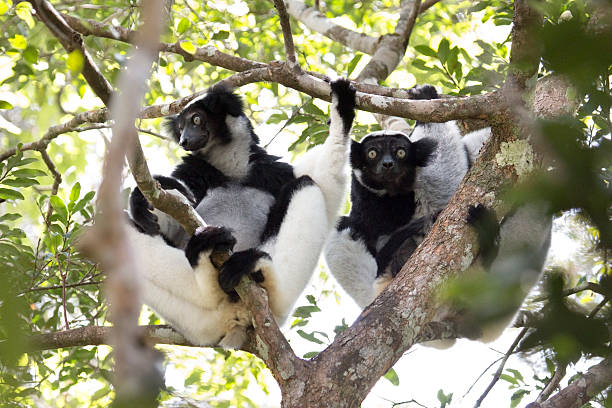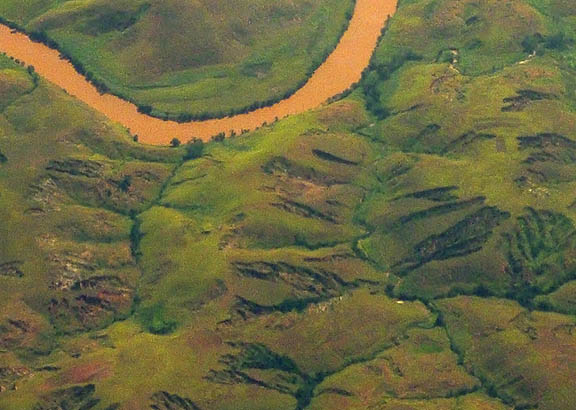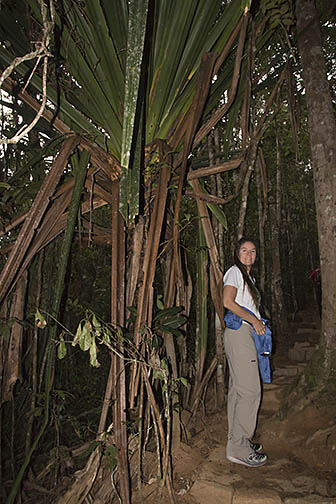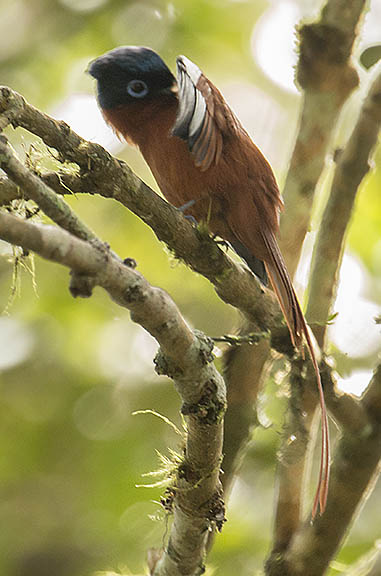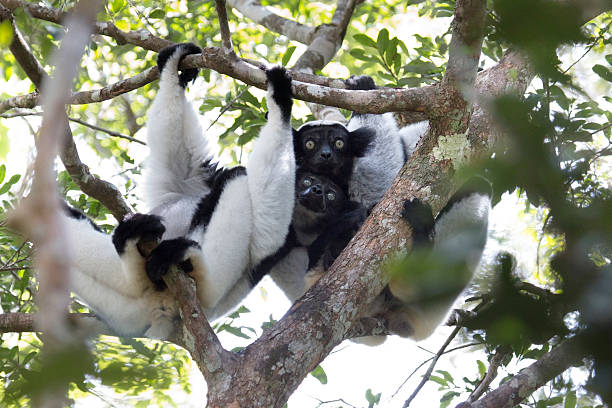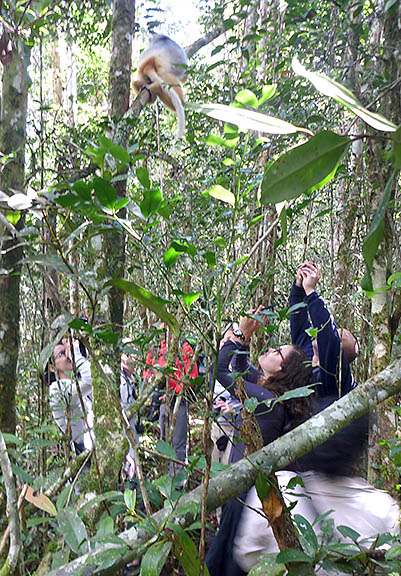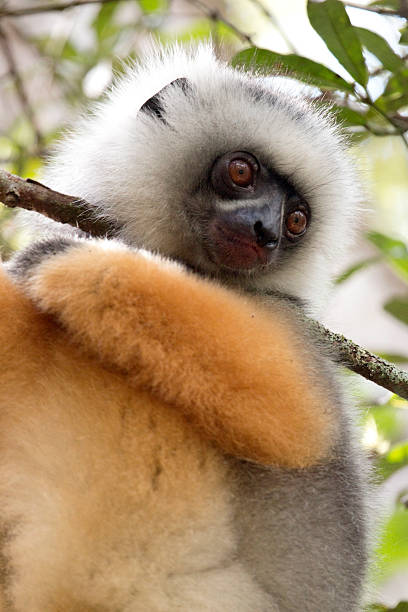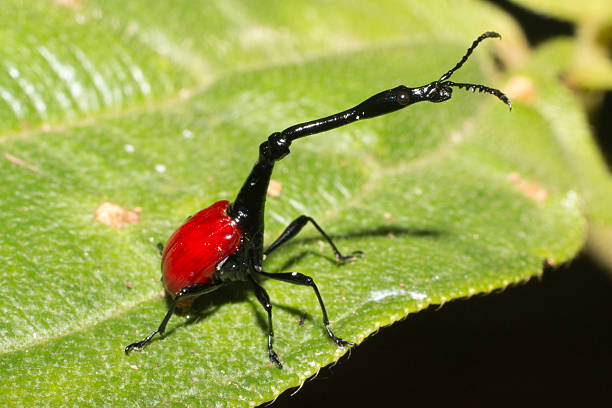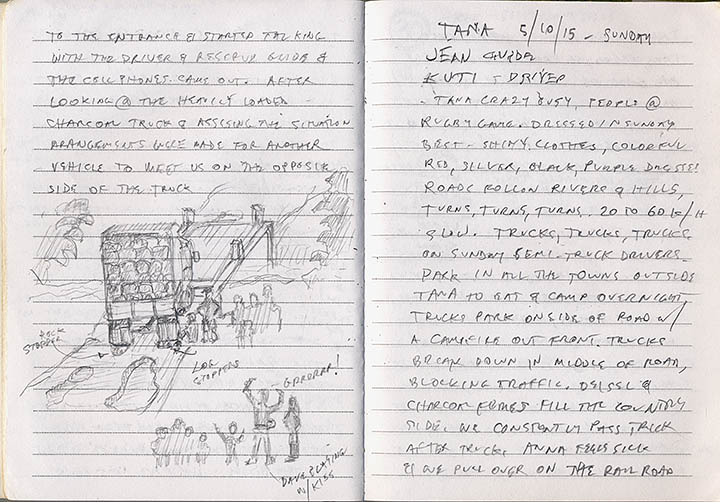 |
 |
 |
   |
|
Madagascar - An Endangered World April 23, 2021 Photos and text by Dave Parsons Early in the morning, a heavy fog filled the air as we climbed the rocky road uphill into the moist, eastern montane rainforest over 3,000 feet in elevation. Extraordinary plants and animals only known to Madagascar surrounded us. Having arrived more than a week ago, we flew over much of the smoldering 1000 mile long island where over 90 percent of the forests have been cut down and burned, converted for cattle grazing, and terraced for crops and rice paddies. Rivers literally ran red from the massive clay soil erosion from deforestation. On the drive from the capitol of Antananarivo to the National Park, freshly filled charcoal sack stacks grew in size the closer we came to the park as thick smoke from wood burning filled every valley and town at night. Despite receiving millions of dollars from conservation groups, rampant destruction still continues daily. The country is depressing and fascinating.
Happy not to be sitting on cramped small planes or driving on winding, endless roads past charcoal filled trucks spewing diesel fumes, we walked eastwards out the parking lot near the small, touristy town of Andasibe Village into the Andisibe - Mantadia National Park on the isolated island of Madagascar. Among the first hikers out on the trail, we climbed through the clouds and muffled bird song up to a lush, green plateau. We turned off the rough track onto a narrow, foliage hugging, width restricted path lined with tree ferns and tall bamboo trees. With my head on a swivel, I tried to see and absorb everything, new plants, animals, birds and bugs. Anna, my wife and our two Malagasy guides led the way, yet, I had to keep one eye on the slick trail. We soon encountered a pair of common brown lemurs snuggled close together in the moss covered tree branches overhead with their fuzzy long tails dangling. With their big yellow eyes they watched us pass below. Soon after, a camouflaged, female, velvet asity bird, streaked with yellow feathers retreated into the thick foliage at our approach.
After brushing against long dry leaves as the trail narrowed, we quickly learned to avoid the razor sharp, spiny leafed pandanus or screwpine, a palm-like tree which stood tall throughout the forest. Looking closely down into the crux of their thick leaves revealed tiny spotted frogs, colorful red and green day geckos and other critters hiding in their saw edged fortresses. Loosing all sense of direction in the thick fog and foliage, I watched a colorful blue coua bird foraging for insects and fruits in low shrubs. Another endemic species to Madagascar, the large, deep blue bird the size of a grouse turned to look at us from his hidden perch before turning tail. With a distinctive light blue ring around the eye, a rufous breasted Madagascar paradise flycatcher with long tail feathers perched above in the canopy grooming and ignoring us, while we navigated the overgrown paths, avoiding numerous flesh puncturing plants. As we hiked, an erie wailing echoed through the thick rainforest in the heart of the National Park. The primal sound sent chills down my spine despite the sweat pouring off of me. Trailing our Malagasy guides at a rapid clip over grabby roots, rotten logs and shelf fungi through thick blockades of branches and spider webs that wrapped around our faces, we were anxious to find the source of the sounds which can travel close to two miles through the forest. It is one of those memorable sounds, like growling howler monkeys or the howl of wild wolves or the call of a bull elk during the fall rut. We were on the trail of the indri, a large, teddy bear looking lemur, black and white in coloration with a snub of a tail and about the size of a small gorilla.
Panting hard after climbing yet another steep hillside covered in giant bamboo trees, the territorial calls grew louder, so I pulled out my digital audio recorder to document the sounds. Walking fast and breathing hard, I couldn’t hold my breath while recording, so I got some wonderful indri calls with my annoying exhalation. With growing excitement, the calls grew louder and we jumped off the narrow trail and started bushwhacking through the middle of the rain forest, sliding down steep hillsides with slick leaf litter and ankle twisting roots while avoiding the giant ten-foot tall razor edged leaves that seemed to grab at everything. Still foggy and watching our foot placement, we looked up and then they appeared. Like an apparition through the mist, sitting fifteen feet up in the crux of a tree with the common grey and white camouflage trunk, a dark form appeared, one indri, then two and then three. We were all grins as they looked briefly at us and then went on about their business as if we aren’t even there. As with most species in Madagascar, the indri, is listed as critically endangered. Pulling the camera out, I focused and took photos while my subject started to poop and pee – how appropriate. The indri glided and jumped huge distances effortlessly from tree to tree, finding leaves to snack on. They vocalized a bit more, grabbed branches with their hands and feet, scratched their itchy faces and tussled with each other while we watched in awe, trying not to fall down the steep slope. One indri popped leaves into his mouth and chewed them like kid chewing a wad of gum. They didn’t pay any attention to us, so I pulled out a lightweight tripod, fought with extending the legs in the thick foliage as dangling vines wrapped around me. I leveled the pod and took some video of the leaf popper eating from the salad bowl in the canopy.
Feeling overwhelmed, it was hard to believe where we were in the middle of one of the most remote spots in the world watching one of the most highly endangered species on the planet. We enjoyed watching the antics of the indri for 20 minutes in our small, quiet group until the snapping of twigs and shuffle of leaf litter indicated the intrusion of other human visitors entering the peaceful feeding session. Always appropriate in humid rainforests while tracking wildlife, the aroma of perfume and after-shave hung like a cloud over a Spanish speaking group who announced their arrival with loud talking and laughing. The television crew had an animated and annoying director who barked out orders to an unfortunate cameraman. Almost shockingly, their guide abruptly started to scream wildly, imitating the call of the indri in an attempt to get a verbal reaction from our trio - it didn’t work. Like a sad comedy on the human condition, we watched the bumbling group wearing inappropriate shoes stumble repeatedly and bobble equipment through the forest with the retreating indri overhead. I’m all for visitors, but show a little respect and humility, we are, only guests in the home of reclusive and highly endangered species in a highly endangered forest.
Quickly moving away from the show, we climbed uphill and following our guides, suddenly veered off the trial and made a beeline towards another hum of activity. Huddled like a group of worshipers holding their phones in the air above their heads in prayer, they surrounded the base of a sacred tree in a low mummer. The group of about twenty people, quietly reached out, aiming their phones towards the fuzzy, ass end of a pair of dangling trails. The white and gray Diademed sifakas cuddled together on a tree branch about ten feet off the ground above the outstretched arms. Trying to stay on the periphery of the circling humans, I waited for the forest procession to pass through the crinkly leaf litter as it moved from target to perched target. The sun came out, as the guides stayed back talking among themselves while nonchalantly watching their visitors. As the largest viewing amoeba moved on, the Diademed sifakas came to the ground. They sat down, picked up fallen fruits to snack on and started playing and tousling on a low, wide branch. It was like a silent wrestling match between cute, fuzzy, stuffed animals. Finding a relatively clear vantage point through the trees and dangling vines we watched and photographed. In my ‘worshipfullness’, I also clicked away, but also enjoyed just watching the playful pair. Indri howled in the distance as other sifakas yawned, groomed themselves, napped, curled their tails, cuddled, stretched out and hung upside-down. For the most part, the wildlife seemed to ignore us and remain unaffected. They were habituated to humans, but dam, they have to put up with this shit every day!
Moving back to the trail, we encountered another pair of brown lemurs sitting together with their long, fuzzy tails dangling as usual, while they looked down on us from their high arboreal perch. Another twosome of indri climbed, jumped and eventually sat next to each other, holding their heads together. With outstretched wings, another Madagascar paradise flycatcher groomed his feathers high above a huge, upside-down balloon nest riddled with holes and covered in paper ants dangling from a narrow tree trunk. Searching for more interesting species, we made our way through the forest past mossy rocks and spiny plants. Sitting on a brown dried leaf, a camouflaged eye spot butterfly warmed himself in a sunny nook on the forest floor as black grackle like drongos flew by overhead. We passed more hidden and colorful day geckos, couas and a perched souimanga sunbird with an iridescent green and blue head, a yellow chest and long curving beak. Anna mentioned to our guides I liked insects and after hearing the word ‘giraffe’ as they talked, we said yes! Minutes later, using a long hooked stick, we wrangled from the top of a small tree a bright, glossy red and black giraffe necked weevil, one of the most odd insects on the island - on the planet really. The beetle had a long, super sized giraffe neck extending from a little, bulbous red body. Perched on their favorite fuzzy leafed tree, I used my macro lens to get up close and personal photos of the charismatic little creature. And then he opened his red shell, unfolded his transparent wings and flew off. Sweating more in the full tropical sun and humidity, sunlight filtered down through the canopy and highlighted more colorful butterflies and even a few local chameleons ‘placed’ at the trailhead. Thoroughly worn out, we were ecstatic with the hike and our wonderful Malagasy guides. Dreading our return to the highway to hell, in other words the RN2 back to Antananarivo, we explored more of the tiny natural island on an island. The entire country is a paradox, a living experiment within the Anthropocene era where the most amazing nature and wildlife coexist among a devouring human population in a slash and burn landscape. See it while you can.
|
Destinations in the Gallery
All contents copyright ©Dave Parsons
DP Home | Feature | Gallery | About
